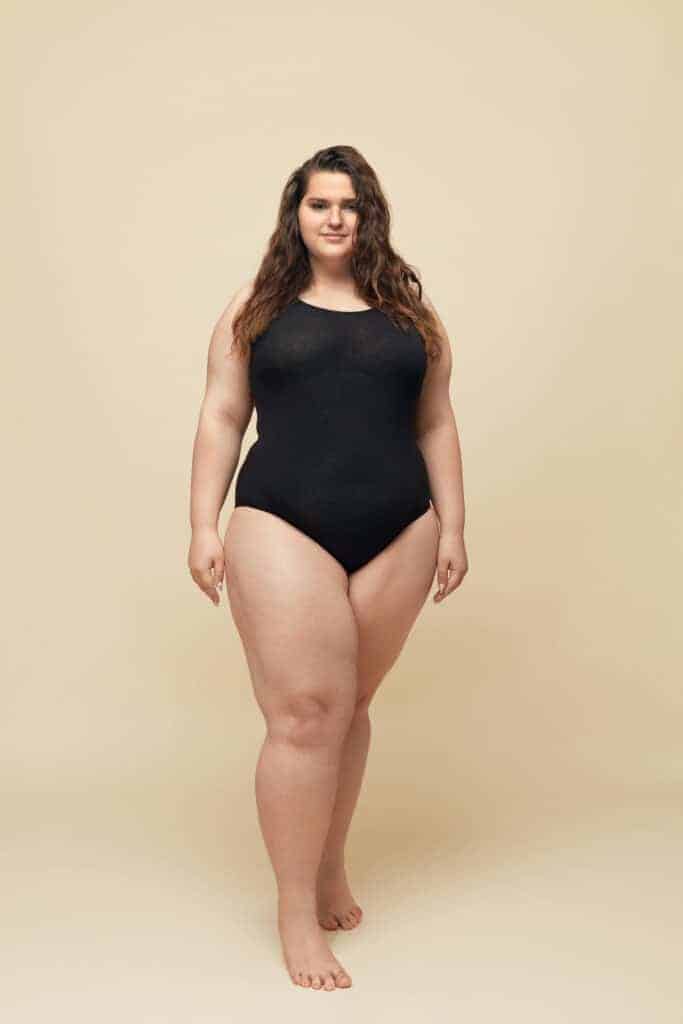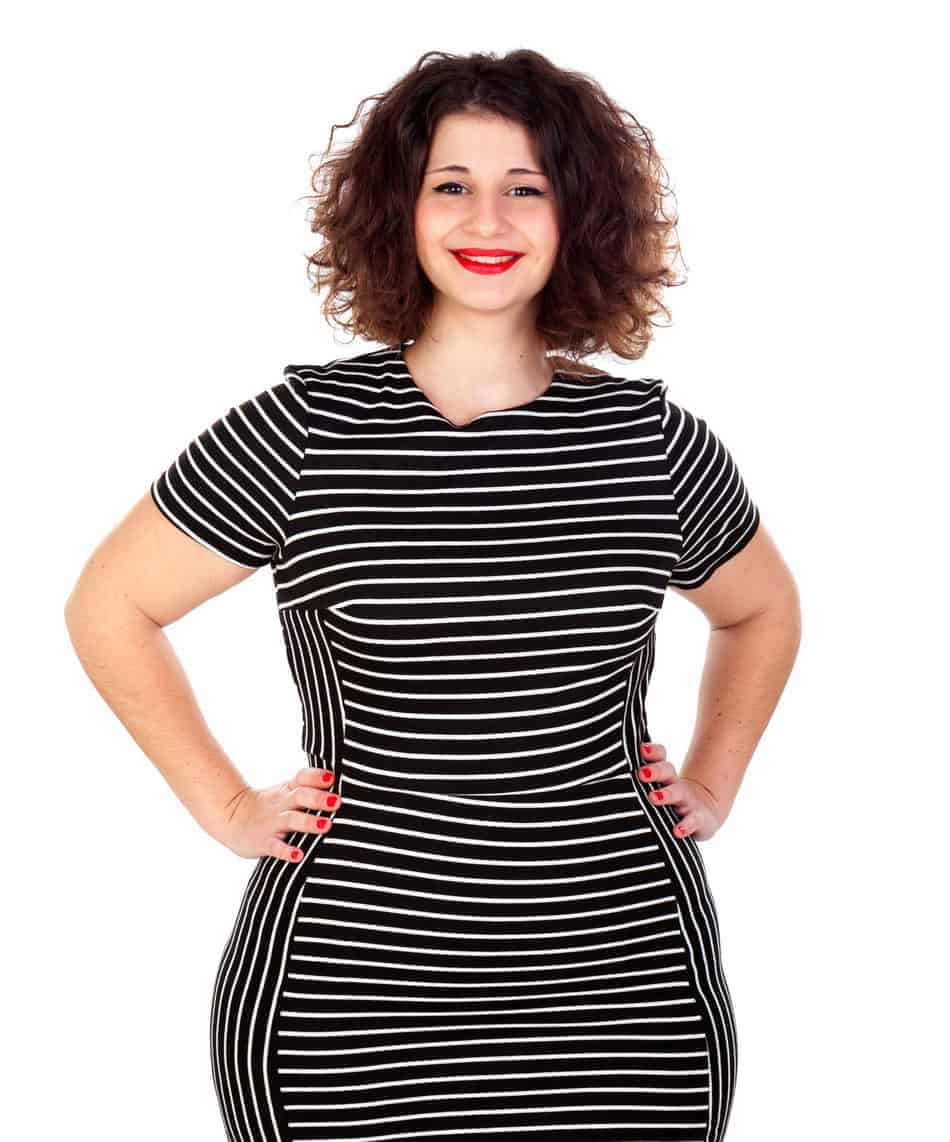A majority of women never bother to find out why they have a particular plus size body type. Many tend to make do with what they have and for the most part, that seemingly works well for them. However, if you are curious to know, there are significant factors that have great bearing on a woman’s body type and size. Here are a few that you should know.
The craze about body size and body type has led to scientific research on the same. Our discoveries in this arena are still in their infancy as much of what is known today is speculative rather than conclusive. Though further research is prudent, genetics, regional traits, personal choice, and lifestyle are factors that have been proven to play a role in the multi-dimensional discourse on body type and body size. The differences in these factors and the innumerable range of their various combinations cause great discrepancies when it comes to one’s physique. Notably, as for plus size women, their body shapes range from race to race with various predominant features in varying ethnicities.
The very definition of plus size means that you are ‘bigger’ than the average-sized woman. Nevertheless, it is incorrect to assume all plus size women all around the world are simply ‘big’. This blanket term guises the various physical differences that come with being big. There are plus size women with wider and voluptuous chests whereas there are those who are not so heavily endowed in this area, there are those with larger waistlines and those who have nearly flat bellies, others have wider and thicker hips and butts whereas others have proportionate upper and lower body parts or smaller butts and hips. The cocktail of variances is endless.

Granted, these differences are accentuated by the varying sizes within the plus size camp itself. However, there is considerable proof that ethnicity, diets, and genes among others have considerable impacts on the shape of women all around the world. Teenagers, youths, and older women of various groupings all portray significant differences amongst themselves and in comparison with the like-grouping of women with distinct gene composition, race, diet, and the like. Due to the innumerable possible outcomes, there is yet to be a comprehensive statistical and comparative study on the matter.
Knowing what influences your body type and size is advantageous for you in the following ways:
- It helps you understand what is within your control when it comes to your body size and shape and what is not.
- It helps in the selection of more effective and targeted means to help you attain your body goals.
- Self –actualization /self-knowledge
What Factor Affects Plus Size Body Type
1. Genes
Popular questions asked around the plus size and also medical circles is whether being plus size is genetic? Do some people have a higher predisposition to be bigger than others because of their genetic composition? If so, to what extent does this affect their physique as they develop into old age? Further, does it mean that being big is their inevitable outcome?

Our DNA composition influences our physique, general predisposition, and behavior. It is made up of genes from both parents. In terms of body weight, Dummies states that your genes are wired to pre-determine your weight range. This range is what your body will naturally strive to maintain throughout your lifetime. In effect, being within your natural weight range will require minimum effort. Any efforts to alter this ‘natural weight’ will typically need more effort and in some instances a stronger set of genes that can enable you to lose the unwanted weight and keep it off.
Research shows that genes determine up to 80% of an individual’s body size and shape. Studies conducted by Michigan Medicine reveal that 97 different regions of the genome have some bearing on the eventual body size and type of an individual.
These regions are linked to the metabolic and neurological processes of the body. For the metabolic processes, these genes affect or determine the metabolic rate of the body. This influences how many calories can be burnt by the body ‘naturally’ or upon exertion. Those that affect the neurological processes influence one’s appetite therefore determining how much and how frequently they eat.
Genes: Are there Muscle and Fat Genes?

Building muscle mass is also another area that is heavily influenced by an individual’s genes. As documented in the International Journal of Obesity, scientists have discovered that people with ‘muscular genes’ can get away with working out less and yet look muscular simply because of their genetic makeup. On the contrary, those without these types of genes would need to hit the gym and put in twice the amount of work to look similarly muscular. This is also true when it comes to the ‘obesity gene’ or ‘fat gene’.
There has been some breakthrough in research about the ‘fat gene’. Scientists have shown that obesity can be hereditary. This is not to say that all instances of obesity or ‘being fat’ are because of the presence of this gene. However, those whose parents were obese and thus inherit the ‘fat gene’ are predisposed to being obese or fat in their lifetime. This means that they are more likely to become obese than those who lack this gene. However, the extent and limits of this assertion are still being prodded into by scientists.
Genes: Pear and Apple Body types

Interestingly, research conducted by Professor C. Ronald Kahn of the Harvard Medical School shows that certain genes determine your waist to hip ratio. The predominant types of these genes are three in number, namely Tbx15, Gpc4, and HoxA5. They dictate what body region fat is to be stored. These genes tend to make ladies have wider hips and butts thus giving them a pear body shape. In plus size women, these genes tend to concentrate most of the fat around the thighs, hips and the butt as opposed to the belly region, making the plus size ladies with this gene more voluptuous in their lower bodies compared to their upper bodies.
On the other hand, if your parents are apple-shaped, there is a likelihood of you having an apple shape. The Apple shape is popular among men – especially in their older years- as fat tends to accumulate around their gut giving them protruding bellies. When this fat gene is passed on, it translates to a higher disposition to accumulate fat around the belly area of the child. Plus size women with this fat gene have most of their fat around their bellies, and not their hips or butts. Additionally, a woman’s breast size is also influenced by their genes. Those whose parents or extended family members have larger breasts will likewise develop voluptuous chests.
This inevitably translates into ‘different looking’ plus size women all around the globe.
2. Regional Traits
Ethnicity and race are distinguishing characteristics when it comes to regional traits. Typically, Black and Hispanic women are deemed to have wider hip proportions and butts compared to Asian or White women. The discourse around this has raged on since time immemorial and all sorts of anecdotes, theories and rationales proposed as to why. Three particular narratives are intriguing.

Some believe that the various body shapes are inherent to the various races. This means that the origin or tendency of having such body proportions cannot be explained in any other way other than acknowledging it as the unique trait and characteristic of the various races and ethnic groups. Another belief stems from ancient tales that suggest that women being thicker was widely celebrated and admired among the Caucasian, Latino and Black communities. It, however, was frowned upon among the Whites and Asians. The disparity was attributed to what each race and tribe viewed as a symbol of wealth in a moment in time.
Tales are told on how when food was scarce and could not be easily obtained by all, those who were thicker and bigger were considered and celebrated as wealthy, as they had the means to fend for themselves. As time passed and food became cheaper and easier to obtain to all, the symbol of wealth became thinner body frames. This was because those with thinner frames were deemed financially able to afford fitness training which the layman could not. Blacks on the other hand never evolved to the 2nd limb and still, a majority consider being bigger as a sign of wealth.
Lastly, the narrative on ‘childbearing hips’. Historically, all women of old had curvier frames which enabled them to give birth to many children. However, when the English and French women started to decrease the number of children they would have (to have smaller families) they gradually evolved to have smaller hips.
Nevertheless, however you look at it, when it comes to plus size women a majority of white plus size women are widest at their waistlines, whereas black plus size women are widest at their hips and butt. The reason is yet to be scientifically determined. I guess we will have to rely on the tales and anecdotes of old till the same is proven.
3. Culture
Culture is the way of life of people. It entails food, language, shared history and ancestry among a group of people. Plus size women in particular cultures display some differences in physique based on their diets and lifestyles.
Cuisine

Asian women have the lowest percentage of plus size women. They are regarded as the ‘fittest’ race in the world when it comes to body size. This can primarily be attributed to their unique traditional diets and practices around food. Foremost, Asian meals are made up of locally sourced ingredients which have high nutritional value. Fast foods, although somewhat common in Asian countries, do not supplant the place of well-cooked nutritious food in most households and restaurants. Many still prefer homemade staples.
Additionally, most soups, salads or drinks such as tea are seasoned with herbs that contain medicinal properties. This helps prevent weight gain and incidental health risks. ‘Present eating’ is typically encouraged at mealtime. Members of a household or friends gather to eat and converse – phones and other electronics are put away allowing members to savour their meals uninterrupted. Another popular practice is eating with chopsticks, which helps them in moderating their intake of food.
In western countries, the availability of fast food options is relatively higher and cheaper than in other civilizations. This allows for the unhealthy intake of fat-saturated foods throughout the American population that has little to no nutritional value. This translates to many people becoming overweight and even obese. This occurrence is significantly lower in Asian populations because of their predominant nutritious diets and healthy food practices.
Media Sensations
The media serves as a reflection of a people’s culture, beliefs, norms and popular opinion. The previous trend amongst western media outlets was to popularize skinny looking girls as being the ideal woman’s body type. Trends have changed to include plus size models in beauty and body acceptance campaigns. With the incessant badgering of the media on the ideal body size, women tend to succumb to this pressure and strive to attain the popularized body shape and size standard.
It’s popular to find, women who are hitting the gym to achieve the Kim Kardashian plus size butt or who go under the knife to have butt implants or fat grafting, for a curvier frame. For these women, there being plus size is deliberate and a function of choice as opposed to genes or regional traits.
Final Thoughts
It’s interesting how our body size and shape are influenced by several factors that are essentially beyond our control. However with all the above said, a paramount factor that influences our body size and shape and is within our control is our personal choice. Science has demonstrated that those who lack good muscle-building genes can still build muscles; hence those with fat genes can remain healthy and fit throughout their lives only if they consistently make the right lifestyle choices. Being ‘predisposed’ or at a ‘higher risk’ of developing something does not mean that you will develop the said characteristic. By making the right health and nutritional choices, you can offset unwanted ‘default appearances’ with proper exercise, medication, and even fashion.



